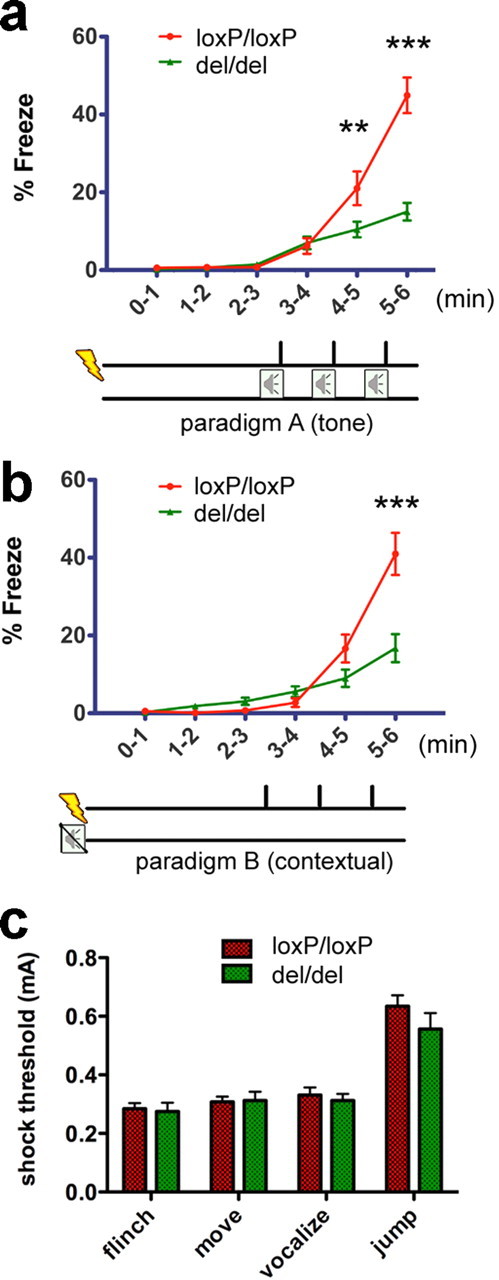Figure 1.

Deficits in fear acquisition in mice lacking mGluR5. a, Fear acquisition by three footshocks paired with tones. mGluR5del/del mice (n = 28) froze significantly less than mGluR5loxP/loxP(n = 27) (F (1,106) = 13.14, p = 0.0006 for genotype; F (2,106) = 33.93, p < 0.0001 for training–genotype interaction; Bonferroni post-tests for genotype, p < 0.05 at 4–5 min, p < 0.0001 at 5–6 min). b, Fear acquisition by three footshocks. There was less freezing in mGluR5del/del mice (n = 20) than mGluR5loxP/loxPmice (n = 25) (F (1,86) = 6.31, p = 0.0158 for genotype; F (2,86) = 14.48, p < 0.0001 for training–genotype interaction; Bonferroni post-tests for genotype, p < 0.0001 at 5–6 min). c, Acute pain threshold to footshock was not altered in mGluR5 null mice. We measured the minimal currents required to elicit four stereotyped reactions against footshock: flinch, move, vocalization, and jump. mGluR5del/del mice (n = 8) and mGluR5loxP/loxP mice (n = 13) showed the same pain sensitivity to an increasing electric footshock (t test, p > 0.05 for each reactions between genotypes). Data are presented as SEM (**p < 0.01,***p < 0.001 for Bonferroni post-tests).
